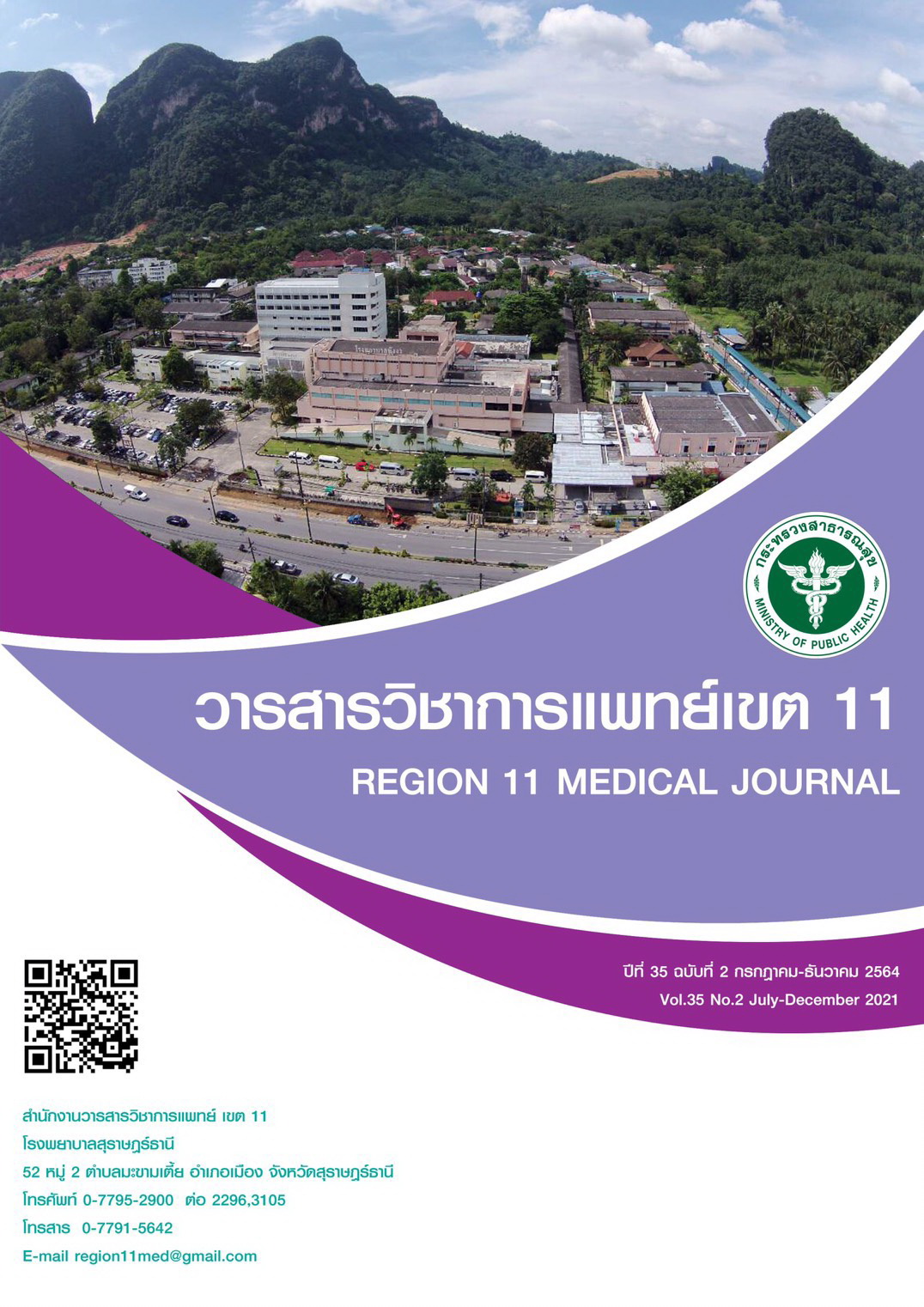The result of local twitch response during treatment of myofascial pain syndrome in the upper trapezius muscle by trigger point injection technique: A retrospective study
Keywords:
Myofascial pain syndrome, Local twitch response, trigger point injection, upper trapeziusAbstract
Background: Specific treatment by trigger point injection is a popular method to treat myofascial pain syndrome. When trigger point injection is applied to the trigger point, it can induce up to 44% of the local twitch response (LTR). It was observed that patients who had LTR during trigger point injection were more likely to have better results than those without local twitch response.
Objectives: To compare the results of treatment of patients with and without LTR during trigger point injection in patients with Myofascial pain syndrome in the upper trapezius muscle.
Method: A retrospective study of medical records from patients diagnosed with myofascial pain syndrome in the upper trapezius muscle and was treated with trigger point injection in orthopedic department at Ranong Hospital from July 2019 to December 2019. Total 32 medical records were included in this study. To compares between the group with LTR and without LTR during the treatment.
Results: The study showed that at 1 month after trigger point injection, patients with LTR during treatment had statistically significant decrease in pain(p=0.045), increase in pressure pain thresholds(p=0.047) and increase of contralateral neck flexion (p=0.03) and contralateral neck rotation(p=0.041) compared with patients without LTR.
Conclusion: Presentation of LTR during trigger point injection is a positive factor for a successful treatment in patient with myofascial syndrome.
References
Kalichman L, Vulfsons S. Dry needling in the management of musculoskeletal pain. J Am Board Fam Med. 2010;23(5):640–6.
Simons DG, Travell JG, Simons LS. General overview. In: Johnson E, editor. Travell & Simons’ myofascial pain and dysfunction: the trigger point manual. 2nd ed. Baltimore: Williams & Wilkins; 1998. p. 11-93.
Weller JL, Comeau D, Otis JAD. Myofascial Pain. Semin Neurol. 2018;38(6):640–3.
นฤมล กมลสวัสดิ์ กพ. การเปรียบเทียบผลการรักษา myofascial trigger point โดยใช้dry needlingและการฉีด 1% Xylocaineในผู้ป่วยที่มีอาการปวดกล้ามเนื้อคอและหลังส่วนบน. เวชศาสตร์ฟื้นฟูสาร. 2005;15(2):88–100.
Thai Association for the Study of Pain and Thai Myofascial pain Society, Recommendations for the Treatment of Myofascial Pain Syndrome & Fibromyalgia, 2020, 12-20
Rachlin ES.Trigger points. In:Rachlin ES, eds. Myofascial pain and fibromyalgia : trigger point management. St.Louis : Mosby, 1993 : 173-96.
Myburgh, C., Larsen, A.H., Hartvigsen, J., 2008. A systematic, critical review of manual palpation for identifying myofascial trigger points: evidence and clin- ical significance. Archives Phys. Med. Rehabilitation 89, 1169-1176.
Cagnie B, Dewitte V, Barbe T, Timmermans F, Delrue N, Meeus M. Physiologic effects of dry needling topical collection on myofascial pain. Curr Pain Headache Rep. 2013;17(8).
Tekin L, Akarsu S, Durmuş O, Çakar E, Dinçer Ü, Kiralp MZ. The effect of dry needling in the treatment of myofascial pain syndrome: A randomized double-blinded placebo-controlled trial. Clin Rheumatol. 2013;32(3):309–15.
Fernández-Carnero J, Gilarranz-De-Frutos L, León-Hernández JV, Pecos-Martin D, Alguacil-Diego I, Gallego-Izquierdo T, et al. Effectiveness of Different Deep Dry Needling Dosages in the Treatment of Patients with Cervical Myofascial Pain: A Pilot RCT. Am J Phys Med Rehabil. 2017;96(10):726–33.
Ibrahim DA, Abdelrahem HA. Cervical region trigger point Injection with dry needling versus wet needling by lidocaine in geriatric population: a comparative study. Ain-Shams J Anesthesiol. 2019;11(1):4–9.
Lynn H Gerber, Siddhartha Sikdar, Jacqueline V. Aredo. Beneficial Effects of Dry Needling for Treatment of Chronic Myofascial Pain Persist for 6 Weeks After Treatment Completion. Physiology & behavior. 2017;176(10): 139-148
Rha DW, Shin JC, Kim YK, Jung JH, Kim YU, Lee SC. Detecting local twitch responses of myofascial trigger points in the lower-back muscles using ultrasonography. Arch Phys Med Rehabil. 2011;92(10):1576-1580.e1.
David J. Magee. Orthopedic Physical Assessment 6th edition. 2014, 167
Okada-Ogawa A, Sekine N, Watanabe K, Kohashi R, Asano S, Iwata K, et al. Change in muscle hardness after trigger point injection and physiotherapy for myofascial pain syndrome. J Oral Sci. 2019;61(1):36–44.
Lavelle ED, Lavelle W, Smith HS. Myofascial Trigger Points. Anesthesiol Clin. 2007;25(4):841
Perreault T, Dunning J, Butts R. The local twitch response during trigger point dry needling: Is it necessary for successful outcomes? J Bodyw Mov Ther. 2017;21(4):940–7.
Zhuang XQ, Tan SS, Huang QM. Understanding of myofascial trigger points. Chin Med J (Engl). 2014;127(24):4271–7.






